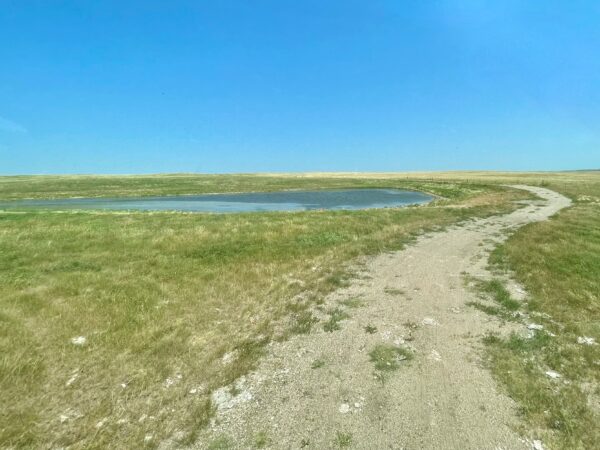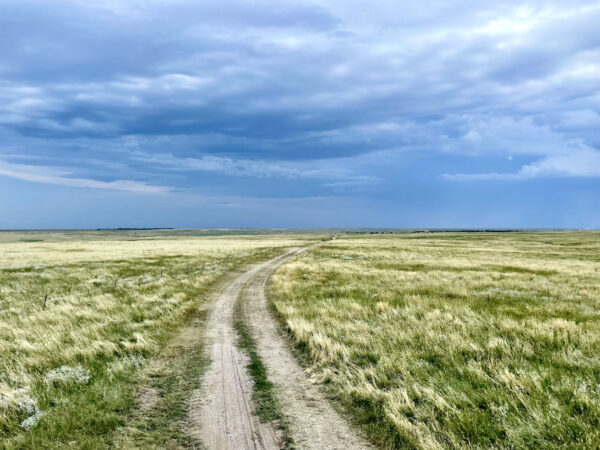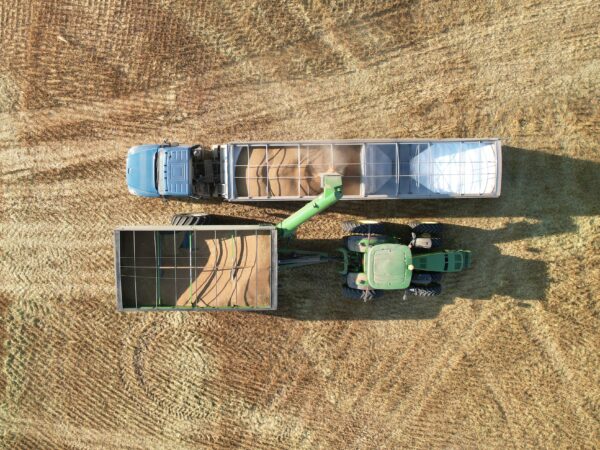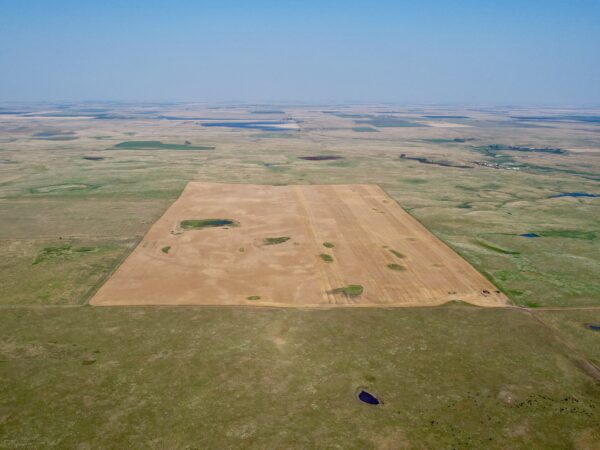
18 Aug Brian: Mountain climbing
Agar, South Dakota—When people ask me what I do for a living, sometimes it’s hard to explain. It’s almost like having a bunch of part-time jobs all at once. Some days I play a mechanic, fixing broken widgets with duct tape and tarp straps. Occasionally I’m an accountant calculating profit margins and running the numbers. And every so often I’m a logistics manager making sure everyone gets to the right place at the right time. But this week I find myself working in a more unusual role, one that not every harvester has much experience with. This week I’ve become a mountain climber.
I’m sure you are familiar with the Black Hills, famous for the lunar-like Badlands and Mount Rushmore monument. South Dakota certainly has mountains, just not in the central part of the state I’m in. I usually leave rock climbing to mountain goats and mountaineers, but this week I find myself harvesting a field affectionately referred to as “The Mountain.”
Calling it a mountain may be overstating it a little bit, and it certainly doesn’t rival the Black Hills in scale or beauty. But when compared to the surrounding landscape it certainly sticks out as a pretty interesting piece of land. You can actually see “The Mountain” off in the distance from many locations, a square of golden wheat surround by miles of green pastureland at the county line. That line almost acts like a pretend mountain range in the way it bifurcates the area. To the west of the country line is primarily farm ground, but to the east and you see nothing but grassland. Few places have such an instantaneous switch from crops to cattle.
The far side of “The Mountain” is a full 2.5 miles away from the road, accessed only by a mostly dirt trail that meanders through a pasture. There is only one way in and one way out. The cows are thrilled to have visitors to their gated community. Reaching the field requires you to open not one, not two, but three barbwire gates. Be careful when you get out to not step in a cowpie. Venture off the beaten path and you will find rocks, rocks and more rocks, waiting to ruin your day with a flat tire. Rule No.1—don’t venture off the beaten path. It’s a slow trek for loaded trucks as they wind their way towards the main road. There’s no rushing this part of their 24-mile haul to the elevator, but don’t get in too big of a hurry and forget rule No. 2. Rule No. 2 is—you guessed it—don’t forget to close the gates. I’m a combine operator, not a cowboy. I don’t want to be responsible for chasing around a herd of heifers on the loose.
Perhaps you think I am making a mountain out of a mole hill, but it really does get pretty steep in parts of this field. When the grain cart is full it carefully avoids the steepest side slopes as it makes its way back to “base camp” where the trucks wait to be loaded. The combines may not use ropes and carabiners to make their ascent to the make-believe summit, but once at the top take a moment to spin around. It’s quite the view in all directions. This isn’t the easiest field to harvest, and the truck drivers certainly won’t rate the trail to the road as their easiest haul. But it’s hard not to get that “I’m at the edge of the world” vibe when you are here, like you’re on the edge of civilization.
Of course, 99% of the other fields in this area share no resemblance to the unique terrain of “The Mountain.” Earlier in the week the crew worked its way across 800 acres that stretched a full 2 miles. Some of the field could be harvested in 1.5 mile long passes, and the middle has just enough rise in elevation that you cannot see one end of the field when you are at the other. It’s a full 50 minutes before the combines arrive back to where their pass started. It can be a 3-mile round trip for the grain cart to fill the trucks and return to the machines, only to find grain tank full strobe lights flashing. Within minutes the cart repeats its cross-country commute all over again.
We’ve finished all our winter wheat here, and we’ve been able to start harvesting excellent 60-bushel spring wheat without any delay. We are probably about two-thirds done with our job here, but there are still a lot more acres left to go. Speaking of a job, I guess I can add mountain climber to my ever-growing list of harvest qualifications. Perhaps it was not as magnificent as a trip through the Black Hills but climbing”The Mountain” this week still provided some amazing views that are hard to forget.

It’s a long trek from the road to the field down the winding pasture path. Rocks line the edges of the trail, so don’t venture off the beaten path.

The last think you want to be is at “The Mountain” when a storm catches you off guard. Storm clouds and lightening are off in the distance, and as the last piece of equipment makes it off the trail rain begins to fall. Perfect timing to be done!

A satellite view from above shows you just how isolated this field is. This image spans approximately 5 miles from left to right, and as you can see there is virtually nothing put pasture surrounding it.

Photos fail to capture the scale and perspective of being there in person. David appears as just a dot as he heads back on the mile long rows.

The “summit” looks less impressive in a photo than in person, but the view from the top stretches for miles in all directions.

Squint real hard, and in the upper left hand corner you can see a white rectangle. That’s the semi trail parked at the “base camp” of the field, and Brenda and David work on preparing another load for the truck.

David unloads on the go, descending down the side of “The Mountain” as the sun descends below the horizon.

Brenda loads another truck, ready to take another 900 bushels on its 24-mile journey to the elevator.

An aerial shot of “The Mountain” helps to better illustrate just how remote this field is from just about anywhere else. Notice the rock piles in the field and consider how much effort it took to transform this field from pasture to crop ground.

The distance from the field to the gravel road is put better into perspective from 1,000 feet above the ground.

The cows are thrilled to have visitors to their triple-gated community. In the evening the cows lay down along the fence and watch the nighttime action.
Brian Jones can be reached at brian@allaboardharvest.com.
All Aboard Wheat Harvest is brought to you by ITC Holdings, CASE IH, Oklahoma Baptist Homes for Children, US Custom Harvesters Inc., Unverferth Mfg. Co. Inc., Lumivia CPL by Corteva Agriscience, Kramer Seed Farms, and High Plains Journal.


Sorry, the comment form is closed at this time.